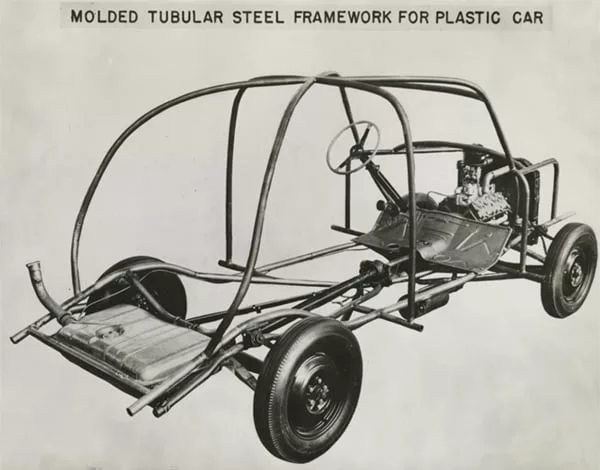The hemp car, an avant-garde ecological legend
The name Henry Ford brings to mind production lines and the car revolution, but did you know that he was also a pioneer in the use of hemp as a material to build... a car? Here's a look back at this visionary invention that combines innovation and ecology.
When Henry Ford reinvented the automobile
In the 1940s, Henry Ford sees hemp as a miracle material. He imagines a car lightweight, durable and environmentally friendly. His vision was to replace traditional heavy materials with lighter, biodegradable plant-based materials. It was in 1941 that he unveiled his prototype of the "plastic car"Made mainly from hemp, flax, soya and sisal.

Le Henry Ford Museum lists the following reasons why the captain of industry decided to pursue this project:
- Ford wanted to combine agriculture and theindustry.
- In his opinion, a plastic car would be more sustainable and safer than traditional steel cars.
- Ford wanted to explore the possibility of replacing metals with plastic in the cars to avoid the disruption caused by the war.
Robust, environmentally-friendly construction
Ford isn't just innovating with green materials: it's also proving that they can be used in a wide range of applications. robustness. This resistance, due to the natural fibres, results in a vehicle that is both light and strong, two ideal qualities for the economy of fuel and safety.
Have you ever heard of the photo where Henry Ford hits a car with a axe ? Contrary to popular belief, it wasn't the famous " hemp car "(Soybean car)! In reality, it was his personal car, with a boot specially made from plastic. Ford loved to demonstrate the robustness of this material, and he didn't pull any punches. When he struck the axe, it flew out of his hand and about 4.5 metres into the air!

Reduced ecological impact thanks to plant fibres
The hemp fibres used in manufacturing significantly reduce the carbon footprint. Unlike synthetic materials, hemp grows quickly, requires little water and contributes to healthy soil. By opting for renewable materials, Ford is already imagining an alternative to energy-intensive industrial processes.
A hemp-based fuel for the future
Beyond building materials, Ford is also exploring the energy potential of hemp. It envisages the use of biofuels derived from this plant, a renewable resource that could replace fossil fuels. This fuel from the plant's oil, could provide a local, environmentally-friendly alternative to fossil fuels, reducing the carbon footprint of every vehicle.
Several studies show that hemp is a source ofenergy viable and, above all, sustainable. In 2010, a study by the University of Connecticut even concluded that hemp fuel could be used effectively at lower temperatures than other forms of biodiesel. What's more, according to the press release, "hemp biodiesel showed high conversion efficiency (97 % of hemp oil was converted into biodiesel) and passed all laboratory tests".
Why has the hemp car never seen the light of day?
Despite its ecological and economic advantages, the hemp car remained at the prototype stage. With the Second World War and the growing influence of the oil industry, hemp was quickly sidelined in the United States. In 1937, a law even prohibited its cultivation, putting the brakes on this avant-garde project.
Is hemp the material of the future for the automotive industry?
Today, Ford's idea is far from forgotten. Several brands ofautomotive are turning to bio-based materials to reduce their environmental impact. Visit hemp car remains a legend that reminds us of the untapped potential of this plant and inspires current innovations in sustainable development.
The hemp car fromHenry Ford symbolises the spirit of sustainable innovation. Ecological, strong and light, it is a reminder that nature has many resources to replace polluting materials and offer greener transport solutions.




